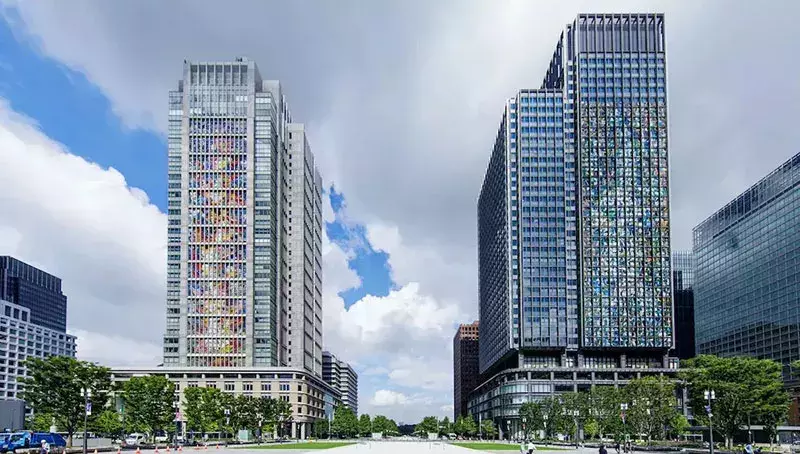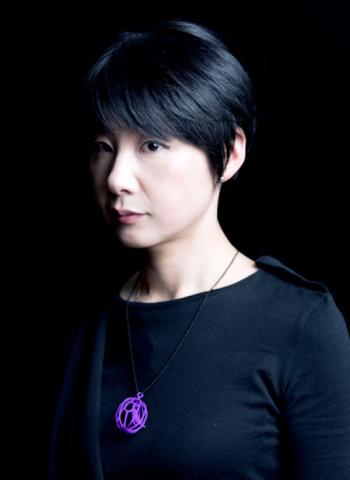
During this summer’s Olympic and Paralympic Games in Tokyo, art and creativity are playing a big role, from the new graphic pictograms representing each sport, to the sustainable design of the Olympic Village. Even the city itself is becoming a vibrant canvas for the Olympian spirit through the "Tokyo Tokyo FESTIVAL", which is hosting artworks and cultural events in various locations across the city to commemorate the games. The highly- anticipated flagship project is “Tokyo Daihekiga” (aka “Super Wall Art Tokyo”), a massive outdoor mural spanning two buildings in Marunouchi District. The mural, which was unveiled on July 17, is exciting not only because it is one of the world’s biggest-ever outdoor artworks, but also because of the larger-than-life stature of the artists creating it – father and daughter team Tadanori Yokoo and Mimi Yokoo.

Tadanori Yokoo is one of Japan’s best-known artists, a “Renaissance Man” who has applied his signature psychedelic vision to everything from graphic design to theater, printmaking to painting, fashion to film. Born in Hyogo Prefecture in 1936, Yokoo got his start in graphic design, and by age 22 had already won an award from the Japanese Advertising Artists Club’s poster exhibition in Tokyo.
He was part of the groundbreaking design team of the 1964 Tokyo Olympics led by Masaru Katsumi, but in the following years, he broke away from a conventional design path in favor of artistic rebellion. In the mid-60s, he began forming a unique visual vocabulary in his color-drenched paintings and prints that combined symbols of Japan’s new urbanization and modernity (like the shinkansen bullet train) with those of tradition (like Mount Fuji, and the pre-War rising sun flag), along with the rock’n’roll counterculture spirit of the era. Influenced by Japanese woodblock prints as much as comic books, Pop Art, and Dada-ist collage, Yokoo’s cheekily provocative works made a splash not only in his home country but overseas, resulting in a 1972 solo exhibition at New York’s MoMA. Through his prolific collaborations with dramatists, filmmakers, and musicians, he was an in-demand creator of posters and album covers (including for The Beatles), and continues his work in painting, graphic design, and other mediums today.

Being the child of a famous artist is never easy, but Mimi Yokoo has forged her own creative path through a distinctive visual sensibility. She began showing her paintings in the 1990s, and over the past decades has also collaborated extensively with the fashion designer Issey Miyake. Some of her perennial themes include animals, flowers, and other facets of the natural world rendered in a painstaking hyper-realist style. Her fearless embrace of bold color may be shared with her father’s work, but otherwise her style is uniquely her own - exploring environments and abstract ideas through texture and warm curiosity.
As artists of different but complementary visions, Tadanori and Mimi Yokoo have collaborated in the past, but never on such an enormous scale (7000 square meters, to be exact). However, the organizers of Tokyo Daihekiga knew they were a perfect match for this ambitious project. Due to the two “twinned” buildings that make up the mural canvas, the project organizers hoped to find two artists who were similarly connected – either a pair of siblings, or a parent and child. The Yokoo family became the dream team to realize this historic public artwork, which centers around the concept of “Universe COSMO POWER” and takes inspiration from water and fire, two elements that shape the universe of dynamic life forms we live within.
From the opening on July 17, until the closing ceremonies of the Paralympic Games on September 5, Tokyo denizens will be able to see this spectacular mural on the walls of the Marunouchi Building and New Marunouchi Building in front of Tokyo Station. For global art lovers who aren’t already in Tokyo, we’ll have to settle for a glimpse of this epic family collaboration online – a true “passing of the torch” from generation to generation of creative visionaries.
To learn more about “Super Wall Art Tokyo,”
visit http://www.tokyodaihekiga.jp




